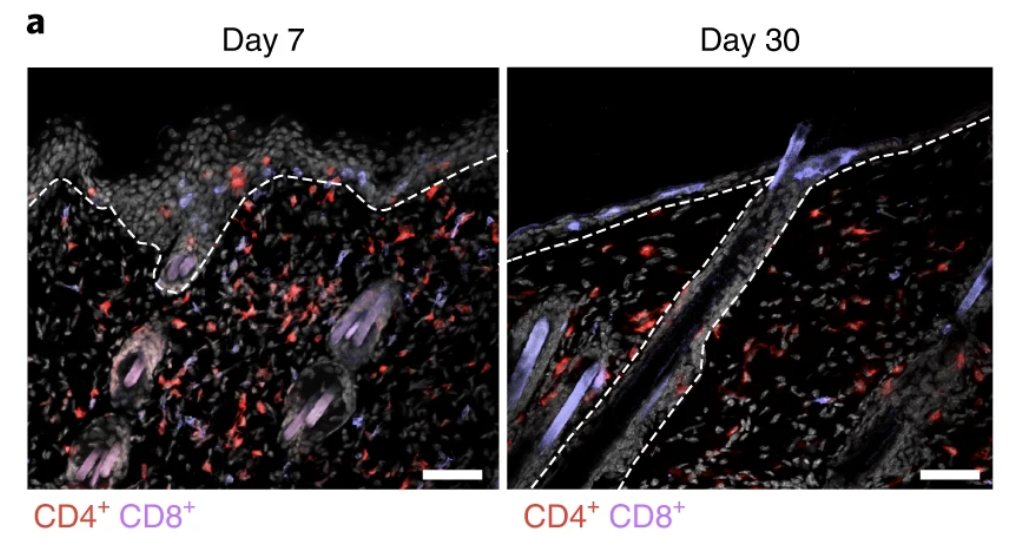
Raíssa Fonseca, Thomas N. Burn, Luke C. Gandolfo, Sapna Devi, Simone L. Park, Andreas Obers, Maximilien Evrard, Susan N. Christo, Frank A. Buquicchio, Caleb A. Lareau, Keely M. McDonald, Sarah K. Sandford, Natasha M. Zamudio, Nagela G. Zanluqui, Ali Zaid, Terence P. Speed, Ansuman T. Satpathy, Scott N. Mueller, Francis R. Carbone & Laura K. Mackay
Nature Immunology, 26 July 2022
Tissue-resident memory T cells (TRM cells) provide rapid and superior control of localized infections. While the transcription factor Runx3 is a critical regulator of CD8+ T cell tissue residency, its expression is repressed in CD4+ T cells. Here, we show that, as a direct consequence of this Runx3-deficiency, CD4+ TRM cells lacked the transforming growth factor (TGF)-β-responsive transcriptional network that underpins the tissue residency of epithelial CD8+ TRM cells. While CD4+ TRM cell formation required Runx1, this, along with the modest expression of Runx3 in CD4+ TRM cells, was insufficient to engage the TGF-β-driven residency program. Ectopic expression of Runx3 in CD4+ T cells incited this TGF-β-transcriptional network to promote prolonged survival, decreased tissue egress, a microanatomical redistribution towards epithelial layers and enhanced effector functionality. Thus, our results reveal distinct programming of tissue residency in CD8+ and CD4+ TRM cell subsets that is attributable to divergent Runx3 activity.